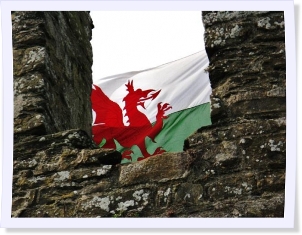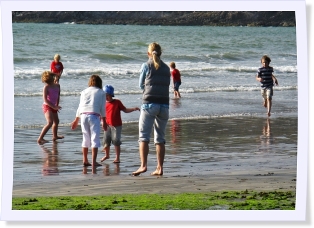
About the Project
What is ‘European Travellers to Wales’?
‘European Travellers to Wales 1750–2010’ is a three-year AHRC-funded project that began in 2013, and is a collaboration between Professor Carol Tully of Bangor University, Dr Kathryn Jones from Swansea University and Dr Heather Williams from the University of Wales Centre for Advanced Welsh and Celtic Studies (CAWCS). It is led by Bangor University. It has a full-time Research Officer, Dr Rita Singer, based at CAWCS in Aberystwyth, and two PhD students, Anna-Lou Dijsktra (Swansea) and Christina Les (Bangor).

The project has uncovered a vast number of travel accounts to Wales in this period, the majority of which are written in French or German. Many of the accounts that are listed in the database were ‘hidden’ in writing about tours in England. ‘European Travellers’ investigated an array of sources including travelogues, guidebooks, diaries, letters and blogs, in both manuscript and printed form. The researchers discovered a broad variety of reasons for European travellers to have come to Wales: from those seeking a romantic idyll, to industrial spies in the Victorian era and refugees from Nazi Germany. This helps us understand Wales better: stories of refugees and exiles have emerged, and a store of detailed descriptions of Welsh landscapes, buildings and ruins has emerged. These are completely new resources for studying Wales, and broaden travel writing to encompass more than English-language portrayals of Wales.
The project’s main achievements are:
- Academic outputs. The texts uncovered by the project have been analysed and their themes explored in journal articles, a special issue on Wales of the journal Studies in Travel Writing and papers at academic conferences. The project leaders further present an overview of the key texts written by European travellers and draw their conclusions in a jointly authored book. In addition, a three-day conference explored the encounter with and representation of minority identities in travel writing.
- Database. Over 400 previously forgotten or unknown travel texts about Wales in various European Languages (mainly French and German) have been identified and compiled in a freely available database. This is many more texts than had originally been anticipated at the start of this project, and represents a rich new research field ripe for further development.
- An exhibition of artworks by European travellers to Wales. ‘EuroVisions: Wales through the eyes of European Visitors, 1750–2015’ was open to the public at three museum across Wales between summer 2015 and 2016. Ceredigion Museum in Aberystwyth, Swansea Museum and Storiel in Bangor supported the travelling exhibition by offering an additional programme of free public events, such as lectures, family workshops, school visits. EuroVisions is complemented by freely available educational resources as well as an on-line, virtual exhibition.
- Educational resources. An e-book on art by refugees aimed at KS2 and KS3 pupils based on the material in the exhibition was produced in collaboration with the education unit of the National Library of Wales.
